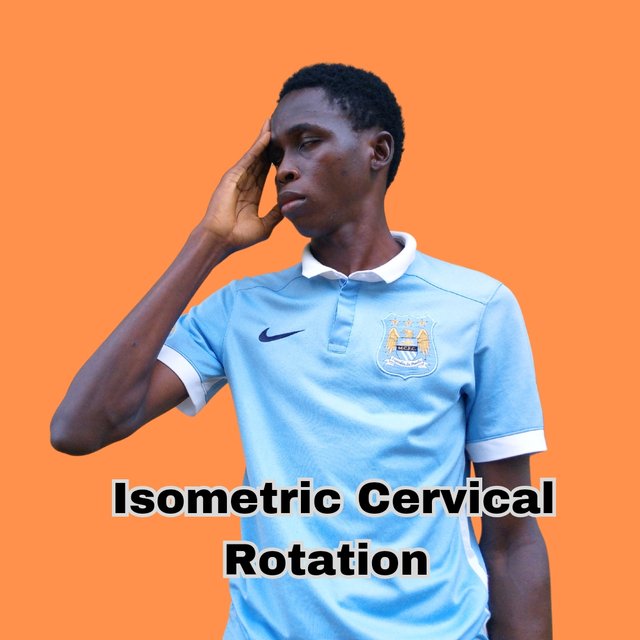Steemit Learning Challenge-S21W3; Cervical Radiculopathy
What You Should Know About Cervical Radiculopathy |
|---|

From my basic biological knowledge I want to bring to your understanding an idea of what the cervical is, the human spine or vertebral column is divided into 5 groups, I will be listing them from the neck region to the lower waist region, we have the cervical, thoracic lumber, sacrum, caudal or coccygeal vertebrae, vertebrae is that backbone that divides your upper body region(posterior part) into half, it runs from the neck to the waist to the anus region, the vertebra in the neck region is known as the cervical vertebrae, they are seven in number.
So we can define cervical radiculopathy as a condition caused when one of the nerve roots in the neck region has a compression due to trauma, tumour or infections, poor posture, herniated disc rupture, etc.
The C6 and C7 nerves, that is, cervical nerves 6 and 7, are responsible for radiculopathy, which is where the cervical spine exits; since they supply motor and sensory function to the upper body, any compression may obstruct the normal functioning of the upper body causing cervical radiculopathy.

Symptoms
Numbness means losing feeling or a loss of sensation when the C6 and C7 nerve is compressed by a herniated disc; it stops the normal sensory signal obstructing blood flow.
Radiating pain; this pain starts in one area which is the cervical spine and spreads to other areas in the nerve path this area could be the shoulder region to the elbow region making the pain like an electric shock.
A tingling sensation is also known as paresthesia; this is like a pin or needle jabbing on the skin and most of the time it is as if something is crawling on the surface of the cervical vertebra or corresponding nerve.

Causes of Cervical Radiculopathy
Herniated disc: whenever there is a rupture between the disc that acts as a seat for vertebrae, it presses against the spine nerve, causing cervical radicals.
Bone spur/spondylosis: as we age, bones may outgrow, and this tightens the space where the nerve passes, causing compression.
Trauma or injury: Accidents can shift vertebrae and cause compression.
Tumours or infections: when there is an abnormal growth or infection, it creates a bug which leans against the nerve roots, causing cervical radiculopathy.

Diagnosis Of Cervical Radiculopathy |
|---|
Clinical history: Anytime a patient complains of neck pain which radiates to the shoulder, the feeling of tingling and numbness, we can diagnose it as cervical radiculopathy. Past histories, like if the patient has been involved in an accident, can also be used for the examination.
Physical examination: The physiotherapist is normally exposed to bone and nerves and can palate with a finger to see where there is radiculopathy.
Spurling tests: in this test, a patient is made to tilt the head towards the place the symptom is felt, and the examiner applies downward pressure; if the pain is felt, then the radiculopathy is positive.
Another is scanning the patient using imaging machines with different imaging techniques
With MRI, physiotherapists can observe the nerve roots experiencing compression by the intervertebral disc shift.
A CT scan will capture the cervical vertebra bone showing the abnormalities seen
It is advisable that after the physical examination, a confirmation is made with imaging; it follows this order.
V BLOGS
I performed all the exercises
Isometric Neck Extension
Isometric Neck Retraction
Upper Trapezoius Stretch
Isometric Neck Rotation
Isometric Neck Flexion
My Review |
|---|
While performing isometric neck flexion, I observed the anterior neck muscles were involved; it seemed as if the upper C1 and C2 bones were the ones involved, and my neck was stretched to the top.
For the isometric cervical rotation without the hand resistance, the physiotherapy is not complete so what happens here is that if the neck rotates to the left with the resistance in the same direction the lower neck probably the C6 and C7 and the left experiences a shift but the most effect lands on the other side of the neck which is the right side.
I would love to see entries from @dexsyluz @bossj23, @alli001, and @whizzbro4eva in this contest, Thanks @ashkhan for this wonderful lesson
Thank you for understanding the lesson and sharing your assignment; I hope that you will enjoy this week's lesson and try to implement it in your life if you see any such case.
Observations
Task 1 (2.9/3)
You have shared a great knowledge about cervical radiculopathy, and it's causes, symptoms, also add the vertebrae involve in cervical radiculopathy but you can also it's second name too. I appreciate your effort.
Task 2 (2.8/3)
In the second question, you tell us about how you have to assess a patient by doing the physical examination, history taking, investigations of patients and specialized tests. But the best test to assess a nerve is NCS and EMG. Great.
Task 3 (3.6/4)
You try the isometric cervical flexion, extension, rotation, retraction and trapezoius stretch. But while performing Isometric exercises you have to apply resistance & apply that much force that didn't allow head movement. In Isometric Neck flexion you move your head forward but while performing that you have to keep your neck straight and don't bend forward. You apply the resistance in Isometric Neck Retraction in correct way and also the trapezoius stretch. Remember always apply heating pad to relax your muscles before performing these exercises. I appreciate your efforts.
Overall you made a great attempt to answer all the questions. I appreciate your efforts. But next time try to avoid the above written suggestions. Keep learning and try to implement your knowledge to the people suffering from any cervical radiculopathy. Thank you.
Thank you so much for this review, I am ever grateful